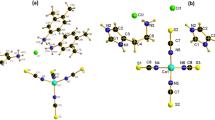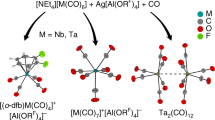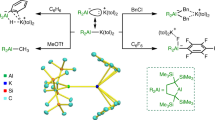Abstract
IN an earlier communication1, a number of experiments were described leading to the conclusion that the activities of enantiomeric ions could be changed to a different extent by the addition of an electrolyte containing an optically active anion or cation. In order to demonstrate the general applicability of this principle, we have sought to resolve a typical non-electrolytic complex salt without salt-forming groups. The peripheral atoms in the tris-acetylacetone cobalt III complex probably carry a slight negative charge, and hence negative or anionic asymmetrical fields are associated with the antipodal forms. The maximum differential interaction in solution is to be expected with a multiply-charged optically active cation, and for the purpose d- and l-tris-ethylene-diamine cobalt III iodides were used.
This is a preview of subscription content, access via your institution
Access options
Subscribe to this journal
Receive 51 print issues and online access
$199.00 per year
only $3.90 per issue
Buy this article
- Purchase on Springer Link
- Instant access to full article PDF
Prices may be subject to local taxes which are calculated during checkout
Similar content being viewed by others
References
Dwyer, F. P., Gyarfas, E. C., and O'Dwyer, M. F., Nature [167, 1036 (1951)].
Turner, E. E., and Harris, M. M., Chem. Soc. Rev., 1, 299 (1948).
Author information
Authors and Affiliations
Rights and permissions
About this article
Cite this article
DWYER, F., GYARFAS, E. Preparation of the Optical Forms of Tris-Acetylacetone Cobalt III. Nature 168, 29–30 (1951). https://doi.org/10.1038/168029b0
Issue Date:
DOI: https://doi.org/10.1038/168029b0
This article is cited by
-
Biological Activity of Complex Ions
Nature (1952)
Comments
By submitting a comment you agree to abide by our Terms and Community Guidelines. If you find something abusive or that does not comply with our terms or guidelines please flag it as inappropriate.



